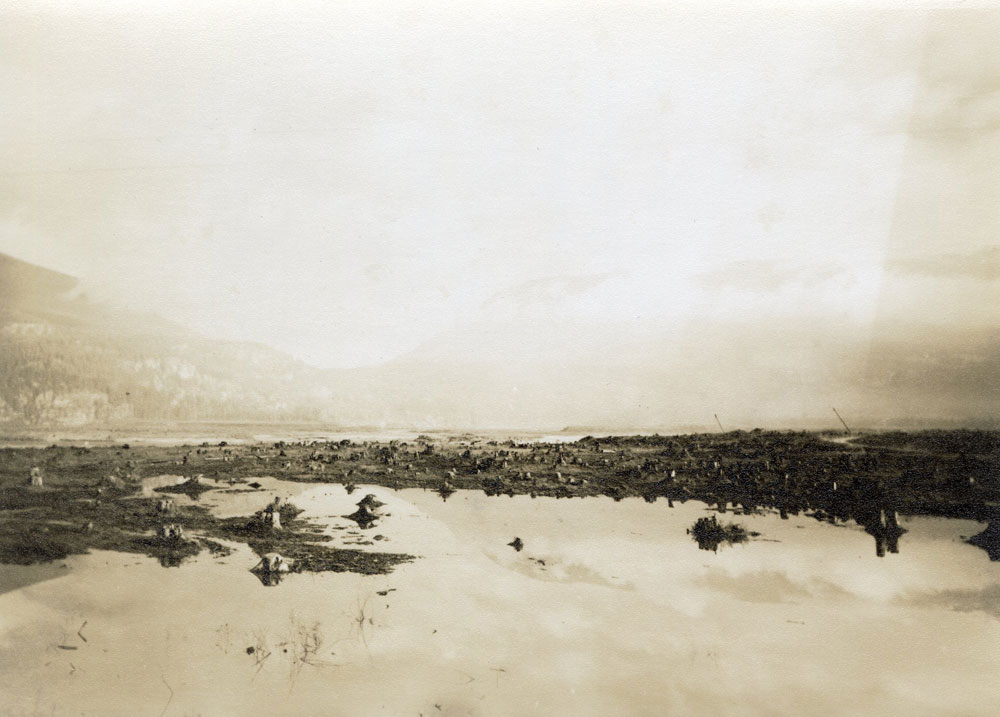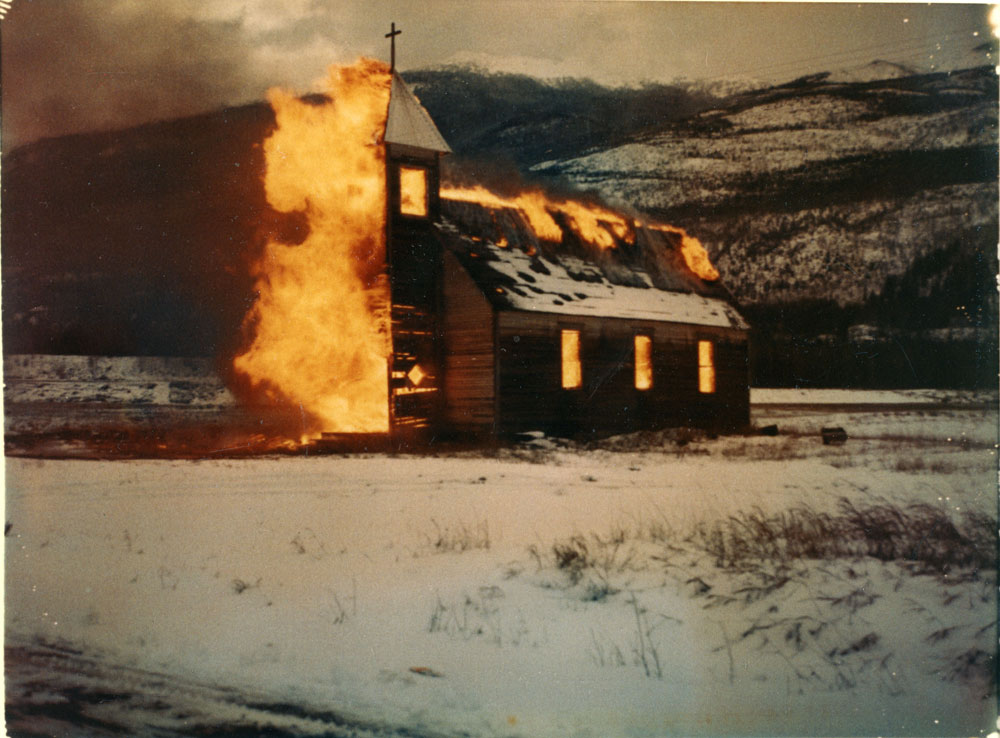Clearing the Land
Clearing the land in the Arrow Lakes reservoir was a massive undertaking.
The Provincial Comptroller of Water Rights issued clearing specifications in the summer of 1964 for clearing the reservoir.
Removal of trees and stumps had to be completed before the filling of the reservoir. All merchantable timber had to be salvaged. Clearing had to be done in such a way that waterways would be safe for commercial and recreational use.

Clearing of stumps from the road opposite Akolkolex Creek. November 20, 1967. RMA photo 12443. Photographer: Estelle Dickey.
Once properties were purchased, all buildings within the reservoir area had to be either moved or burned at the expense of the original owners. Although BC Hydro had a plan for the removals, there were several incidents of looting and arson.
Gawiuk Family Interview – Clearing the Land (captions available in both French and English). Enjoy this video with an English transcript.
Bruce Tillen Interview – Clearing the Land (captions available in both French and English). Enjoy this video with an English transcript.
St. Ann’s Church at Mount Cartier, built in 1921, was dynamited in late October of 1966. The paper speculated that it was a Halloween prank, but no one was charged. A year later, the church was burned down to clear the land.
The dry, cleared land had long-reaching effects. For several years after the completion of the dam, windstorms coming up the valley would sweep huge amounts of dust into Revelstoke, off of the dry lands that once had farms and vegetation. People recall having to run out to bring laundry in off the lines, and having to wash layers of dust off of their vehicles. After tremendous public pressure, BC Hydro finally planted annual rye grasses on the former farmland, to alleviate the annual problem.


